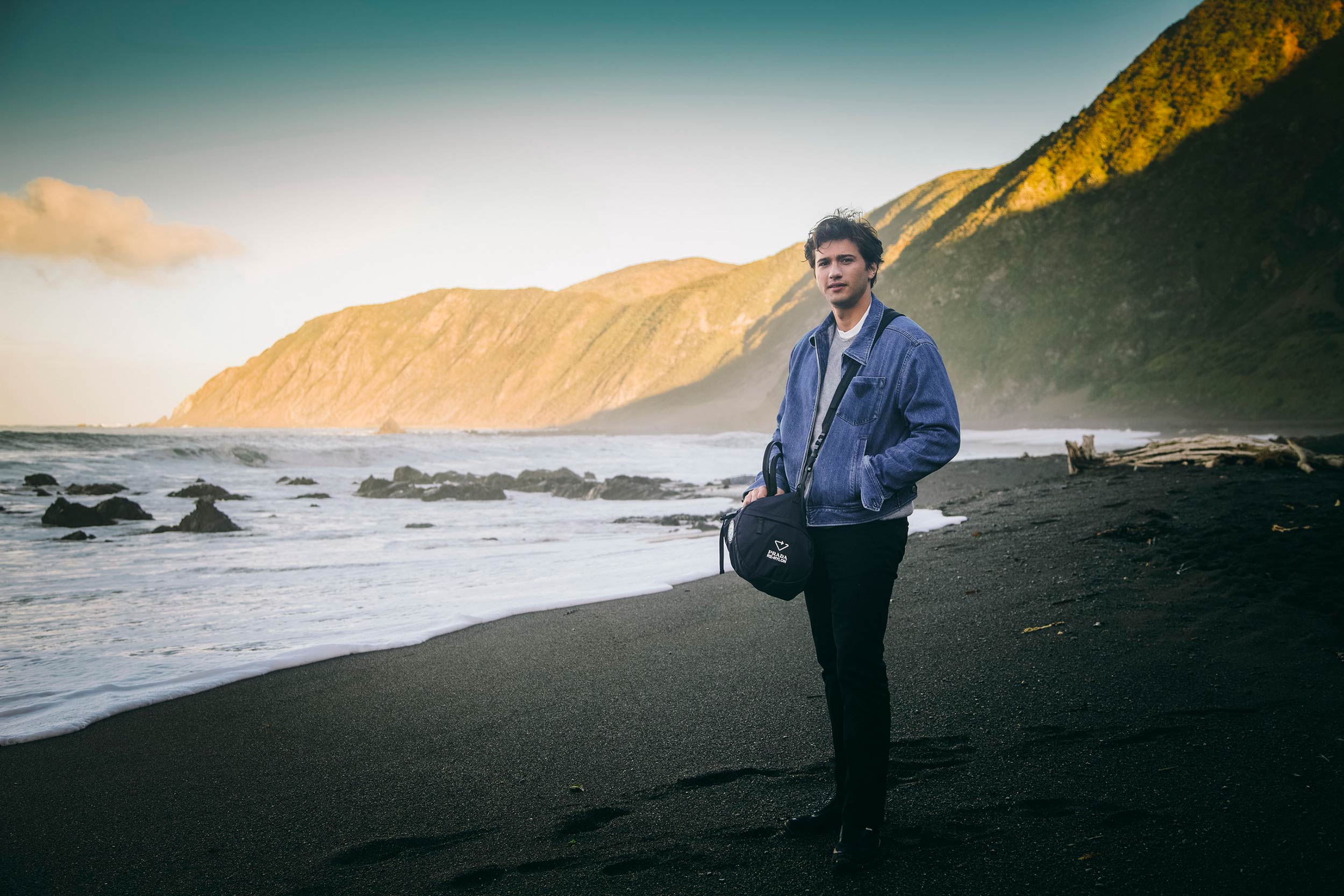Prada responds to the sustainability challenge with Re-Nylon, its new capsule line of accessories made from recycled materials.
Prada is taking up the challenge to reduce its environmental impact by using ECONYL® regenerated nylon to create luxury goods through its Prada Re-Nylon sustainability initiative. Proposing a renewable, cyclical supply chain that maintains environmental awareness with transparency and accountability, the project crosses five continents, connecting with five upcycling initiatives that turn harmful waste into Prada accessories.
For the third episode in its five-part series, Prada traveled to Mahana Bay, off the coast of New Zealand with Australian actor Alex Fitzalan and Sri Lankan National Geographic explorer and marine biologist Asha de Vos to investigate ghost nets—fishing nets that are abandoned or lost in the ocean—and how they damage the ocean and the wildlife that inhabits it.
“We’ve explored less than 20 percent of our world’s oceans, but we’ve impacted about 90 percent of that space,” said De Vos at the beginning of the short film. De Vos explains what happens when whales and dolphins come into contact with the ghost nets. “We see evidence of entanglement scars all the time,” she said. “They are being killed by these ghost nets in our oceans.”
The sheer size of the fishing nets enables animals to swim into them and become trapped. “Some of these ghost nets can be four, five kilometers long, so you’re entrapping dolphins, whales, and turtles, and all these wonderful creatures,” said Rob Wilson, co-founder of Ghost Fishing New Zealand. Wilson and his team scuba dive into the waters, using lift bags to bring the ghost nets up to the surface so they can retrieve them. “We end up with the nets really full with a lot of dead creatures,” he said. “It’s pretty horrific when you come across them initially.”
The Healthy Seas Initiative is also trying to alleviate the damage done by ghost nets—10 percent of plastic waste in the ocean is ghost gear—by sending volunteer divers into the world’s waters. “The Healthy Seas Initiative has removed about 500 tons of ghost fishing gear,” said marine biologist Serena Cox. “Divers all around the world are retrieving those nets and sending them over to Europe, where they’re recycled into other products.”
The retrieved ghost nets can then go to Aquafil, a textile yarn production plant in Europe, where they are de-polymerized with other nylon waste and transformed into ECONYL® regenerated nylon. Prada used those threads to create Prada Re-Nylon, its new capsule collection with six styles that includes backpacks and duffle bags, made in the vein of Prada Linea Rossa, except they’re navy with patches that carry the message of Prada’s recycling efforts. Complete with the Prada Re-Nylon logo, a flowing arrow in the shape of Prada’s iconic upside-down triangle, the collection aims to spread what Fitzalan refers to as a “positive marine conservation message.”







